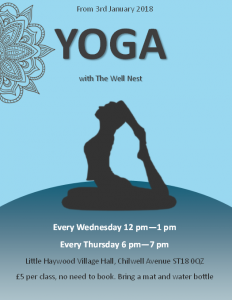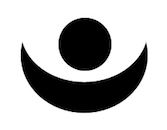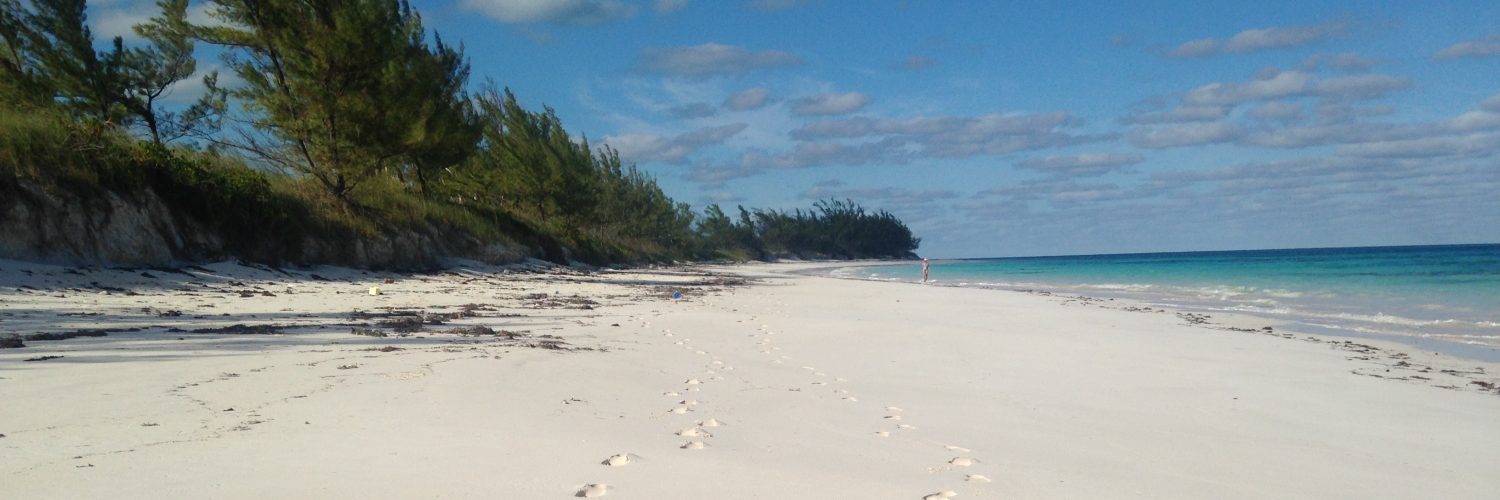If you’ve ever taken a vinyasa class with me, you will be familiar with a lot of the poses from the ashtanga lineage. Vinyasa yoga is essentially a free flowing version of ashtanga – anything goes. Ashtanga is itself quite the opposite; a set number of postures, in a set order…every time.
You may think this sounds a little restrictive and (gasp!) boring, but that is not the case with Ashtanga. There are so many poses and vinyasas (breath with movement) in and out of the poses, that boredom is the last thing on your mind. Lets take a closer look…

Historically speaking…
Ashtanga is a dynamic form of Hatha yoga that has its roots in the town of Mysore, south India. The ashtanga method is an ancient system of yoga that was taught by Vamana Rishi in the Yoga Kurunta. It is believed that the text was imparted to Sri T. Krishnamacharya in the early 1900’s by Guru Rama Mohan Brahmachari.
Ashtanga means ‘eight limbs’ as described by Patanjali (an Indian sage) in the Yoga Sutras (the Sutras are believed to have been written between the 2nd and 4th century CE). This text is the authority on the practice and true nature of yoga – the eight limbs must be practiced in order to realise our true potential, our true nature and transcend human suffering. Ashtanga embodies these eight limbs:
- Yamas (behavioural observances – things that we should do)
- Niyamas (behavioural restraints – things that we should not do)
- Asana (physical yoga postures)
- Pranayama (yogic breathwork to control the flow of our life force energy)
- Pratyahara (withdrawal of the senses)
- Dharana (concentration)
- Dhyana (meditation)
- Samadhi (liberation)
The practice that we know today as Ashtanga yoga was first developed, practiced and taught by the yogi Krishnamachrya in Mysore, India. A student of Krishnamacharya, Pattabhi Jois continued the work of sharing the ashtanga method throughout the world. Today the method is continued by Manju and Sharath Jois (son and grandson of Pattabhi respectively). Ashtanga yoga is therefore a lineage as well as a practice and encourages many dedicated, life-long practitioners throughout the world.
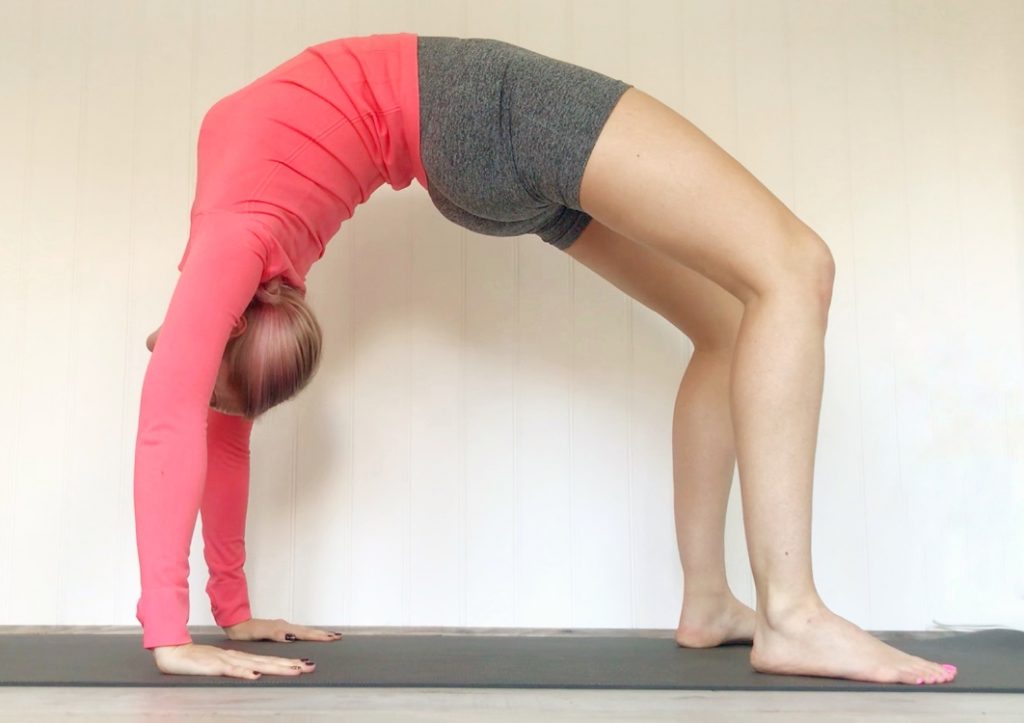
What to expect
Ashtanga yoga is taught in series’ of postures and each student of ashtanga practices the postures according to their own ability. Students are ‘given’ postures by the teacher and practice their sequence individually (although in classes with others) under the guidance of the teacher. Each student therefore is carrying out their individual practice, broadly the same as the other students and yet unique to them. More postures are added to the series as the student grows in strength and flexibility until completion of a series. The next series can then begin (phew!).
This individual approach to yoga (rather than being in a class where everybody is taught the same thing and follows the teacher through the class) is known as ‘Mysore style’ after the place it was originally taught by Krishnamachrya and Pattabhi Jois. Ashtanga can also be presented as a ‘led’ class in the style that we are familiar with, where everybody works through the poses at the same time guided by the teacher – this style is a great place to start your practice.
All students of ashtanga start by learning the postures of the Primary Series. This series is known as Yoga Chikitsa or yoga therapy. The aim is to loosen the body and free the practitioner from stiffness or weakness and allow them the freedom to practice fully. You will find hip opening, hamstring lengthening, spinal flexibility, strength and stamina in the Primary Series.

Is it for me?
Ashtanga yoga is a dynamic practice so you should be prepared to work hard. However, it isn’t yoga for the advanced only and it certainly isn’t reserved for the flexible. Ashtanga often has a reputation for rigidity, but the practice lends itself to variation and modification to suit the individual. Nobody starts an ashtanga practice able to ‘do’ all of the postures. There is work for everybody in this practice.
So what exactly will you find at an ashtanga class?
Structure – the Primary Series (where we all start) consists of sun salutations, fundamental asanas (postures), standing sequence, seated sequence, backbends and a closing sequence. You will learn to know what to expect, but no two days are the same for your body.
Sweat – the practice of ashtanga builds heat in the body. It can be strenuous and definitely raises the heart rate.
Breath-work – each movement in ashtanga is accompanied by the breath. We use the breath to move in and out of poses or hold poses for a breath count. This is the vinyasa – breath with movement.
Meditation – ashtanga, though a strong dynamic practice, becomes a moving meditation due to the structure, breath and counted nature of the vinyasas. You leave the mind behind and crowd out thoughts with the practice.
Accomplishment – The yoga journey is never about achieving postures but about moving beyond the ego to reside in peace; the true nature of the self. Due to the dynamic nature of ashtanga, you will also feel like you have achieved great things. Your body and mind will change with a consistent practice.
Ashtanga is a great place to advance your practice. If you’ve been a yogi for a few years and have felt the magic of yoga, the ashtanga method might be for you. Step outside the comfort zone, try new things and surprise yourself; find strength in backbends, find balance in headstand, find calm in deep twists.
Join me twice a month on Wednesday evenings to get to know the ashtanga method. Master the mind and the body and feel the endorphins flow!
Om shanti shanti shanti
Yoga Focus – What is Kundalini Yoga?
Often referred to as the ‘Yoga of Awareness’ or ‘Holistic Yoga’, Kundalini yoga is a practice fusing several ancient practices and principles to enable the practitioner to manage and manipulate the energetic flow in the body. Kundalini includes the practices of Bhakti yoga (devotion and mantra chanting) Raja yoga (meditation, mental and physical control) and Shakti yoga (the expression and control of energy or power).
A kundalini yoga class can leave you feeling like you’ve been to therapy, done a workout and felt the earth move – vibrationally speaking. Kundalini is a modality by which practitioners can deeply cleanse the nervous system, tune into their inner potential and release energetic blockages or imbalances to find a peaceful life and a balanced outlook. This isn’t just yoga to make the body feel better – this is yoga that can create shifts in every area of your life.

Historically speaking…
The exact date and emergence of kundalini tantra is unclear, but the practices of kundalini energy manipulation and philosophy are mentioned in the Upanishads (vedic yoga texts) dating back to 1000 BC. The term Kundalini means a spiritual energy or life force located at the base of the spine and often represented by a coiled snake. Practicing Kundalini yoga awakens the kundalini shakti (energy of universal creation) and allows it to rise up through the chakra system along the spine to the crown of the head. Each chakra is a wheel or hub of energy at a particular point in the spine where energy channels intersect. Through practicing asana (physical postures), pranayama (yogic breathing techniques) and mantra it is possible to direct the flow of energy through the chakras to have profound effect on the nervous system, the mind and the flow of life. If you’ve ever felt like a passenger in your own life, kundalini may be what you’re searching for.
The practice of kundlini yoga historically was part of tantric tradition. Tantra means secret mantra and as such, the practice was the preserve of the very few privileged gurus and selected students. The modern presentation of Kundalini yoga that we often see today is a blend of several traditions brought to the mainstream by Yogi Bhajan in the 1960’s. Practice involves the use of Kriyas – yoga ‘sets’ of asana, pranayama, meditation and the use of yogic muscle locks or bandhas to direct energy flow and prepare the nervous system, mind and body for the flow of kundalini awakening and rising through the chakra system.
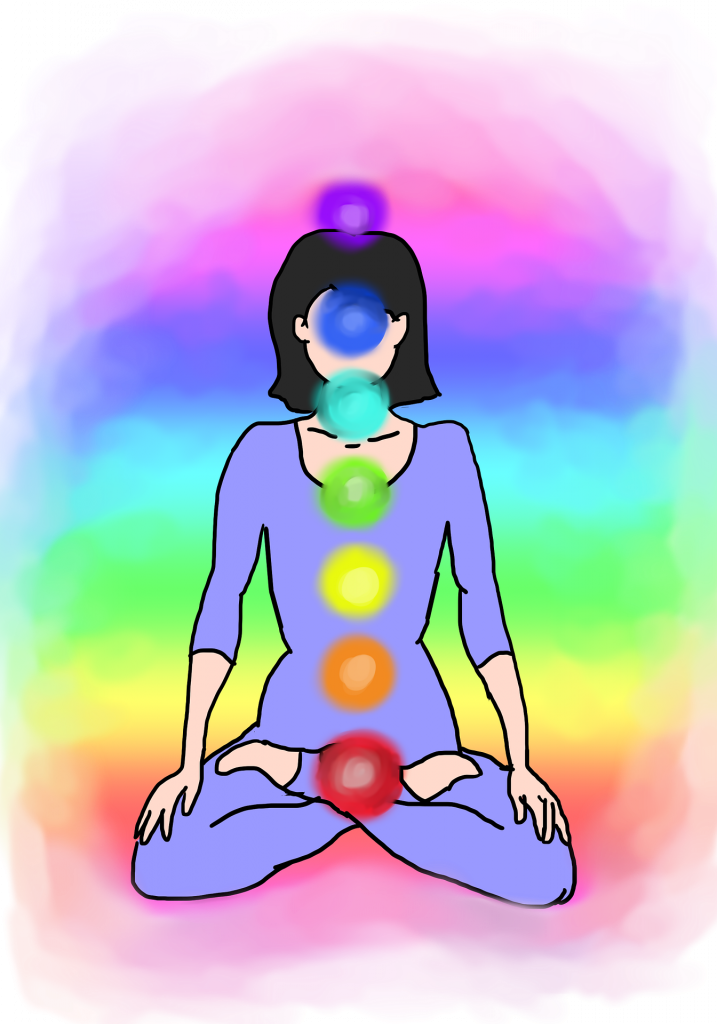
On wearing white
Traditionally teachers and students in kundalini class wear outfits of all white. The choice of white as the universal colour of practice is that colours have an effect on consciousness. Many holistic traditions refer to colours as being inseparably connected to energy points in the body. The chakra system is strongly identified with colours at points from the base of the spine to the crown. The Aura of each individual presents as colours depending on energy flow and interaction.
White is the colour that represents all 7 colours of the chakra system. By wearing white, we project the auric body further away from our physical form, making the energetic changes of our kundalini practice more profound. Wearing white contributes to the efficiency, profundity and progressive effect of our practice. Having said that…your practice is personal to you. If you feel more comfortable or you feel you have a deeper connection to another colour, you can wear whatever assists your practice.
Bowing to the truth within you
Each Kundalini session (following modern principles of Yogi Bhajan) starts with the process of tuning in. We do this by rubbing the palms together, pressing the hands together at the centre of the chest and engaging in the powerful mantra Ong Namo Guru Dev Namo three times. This is your recognition of the universal truth within; bowing to your own destiny.
What to expect
Kundalini yoga is weird – there I’ve said it. Now that’s out of the way, let’s look at what a typical class will involve. After tuning in, we start the Kriya – a set of postures (some of which may be familiar to you if you’ve practiced other forms of yoga), breathing techniques, muscle locks and mantra chanting (silently or out loud). Kundalini isn’t as dynamic as a vinyasa class – you won’t be getting up and down from your mat over and over – but it is still challenging. We use rapid repetition and controlled movements to channel energy. You will feel this as heat, emotional release, fatigue or muscle shakes (along with many other possible effects). It’s a full body, mind and spirit experience in each session. Classes will close with mantra, meditation or sound experiences.
Join me on Wednesday evenings twice a month to embark on the extraordinary journey that is kundalini yoga. Awaken your divine energy in 2021 and make this year the year you reclaim happiness.
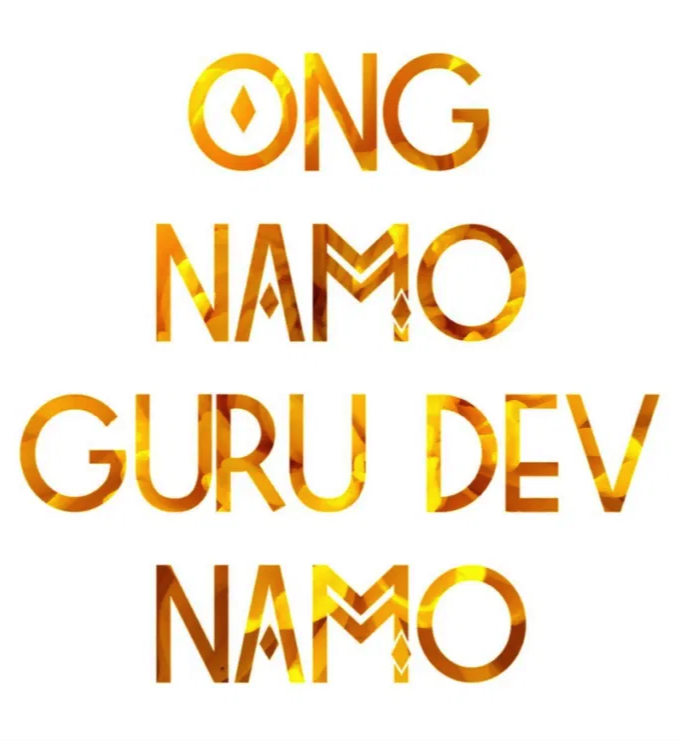
Community Classes are Back!
I am so very pleased to say that community classes start again this week! All venues have given the go-ahead for classes to resume. There will be new guidelines and procedures for using the community venues in light of COVID-19, but if we all do our bit, we should be able to practice safely together.
The venues are luckily large enough for us to practice and observe social distancing without restricting numbers. We may need to alter the room layout to practice in rows rather than in the circular layout we usually, use, however each class will be assessed based on participants at the time.
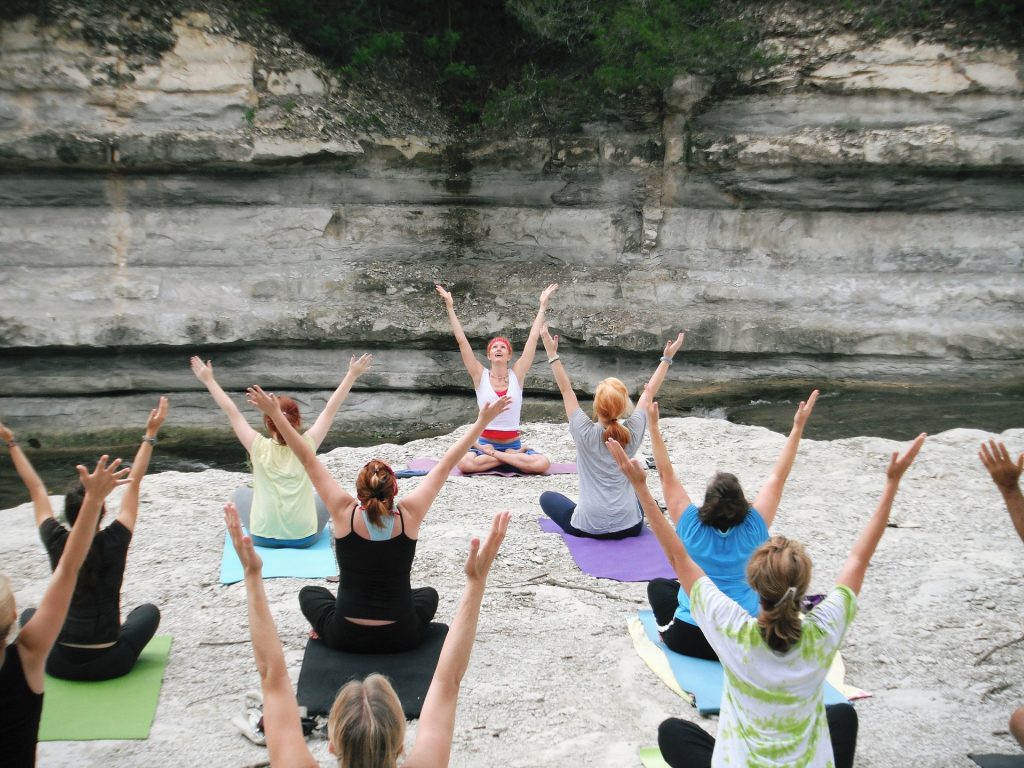
Importantly, as part of track and trace measures, you will be required to provide name, address and contact details so that you can attend class. You can do this in advance by booking online, or you can do this when you arrive at class (please allow extra time for this).
The main points to bear in mind when practicing at community venues are as follows:
- Please queue outside the building allowing 2 metres between each person prior to entering the halls
- A one-way system for entry and exit will be in operation. Please follow signage at the venue
- Hand sanitisers will be available for use at the venues
- There will be no yoga equipment available to borrow; please make sure you bring everything you need with you
- Kitchens will be out of use at all venues. Toilets will be in use to allow one person at a time to use the facilities
- Place your belongings on the floor in the hall to keep use of furniture to a minimum. If you need to use a chair for your practice you can do so, but please leave it set out in the hall for cleaning afterwards.
- Doors and windows will be open for ventilation purposes. Please try not to touch door or window handles unless necessary
- Mats will be spaced 2 metres apart during the class
- You can choose to wear a mask before or during your practice – please make your own assessments of whether this is appropriate for you
- Please make your own assessments of your health and individual risk factors in taking group classes
- If you feel unwell at all, do not attend class
- You will be required to provide name, address and contact details at the time of booking or on entry to the class (please allow extra time for this)
- Payment should be contactless where possible. Loyalty cards can still be used (and cash if that is your only means of payment)
- There will be no late entry once the class has started due to data collecting requirements. Please arrive in good time or book online to provide details in advance of the class.
If you have any questions, please get in touch [email protected]
See you soon!
Namaste
Yin Yoga and Mindful Movement
Mindful movement provides a combination of physical and mental benefits that can connect the individual with the present moment and help develop a greater appreciation of how the body feels and moves.
Yin Yoga is the practice of holding yoga postures (asana) for extended periods of time providing stretching of the connective tissues and release of the energy flows within the body. Through long holds and conscious relaxation of certain muscle groups, participants are brought into deep focus in the present moment. Using mindfulness techniques participants learn to feel the true experience of the body in the moment. This combination of physical and mental practice makes Yin Yoga a deeply relaxing and balancing practice.
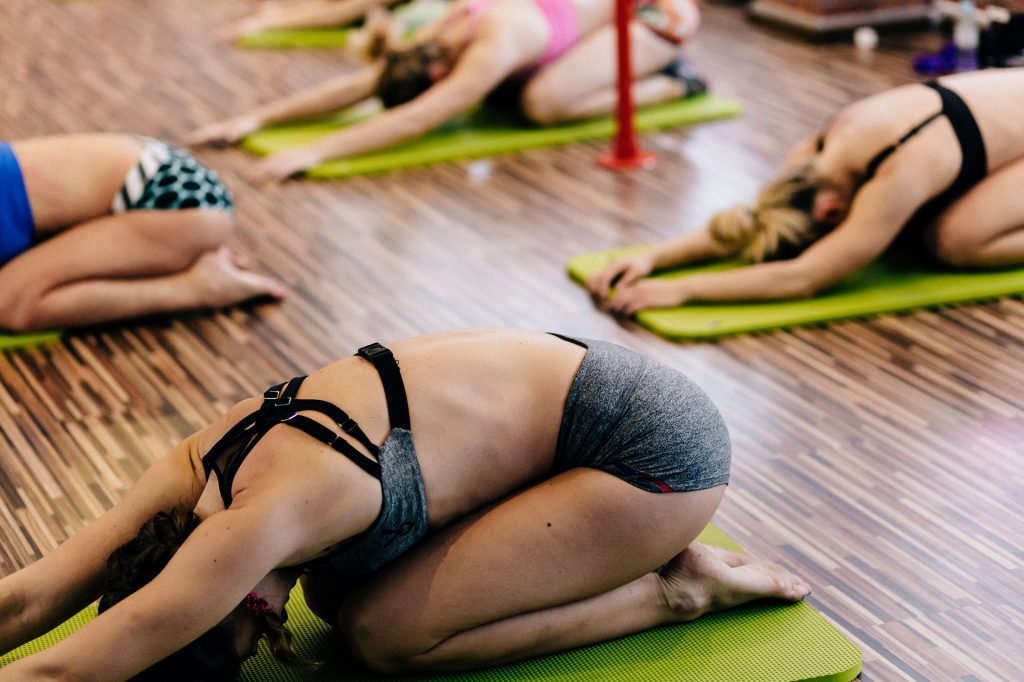
The practice of Yin Yoga is not the dynamic flowing yoga often seen on social media, but is instead a gentle series of asana combined with breathing and focus on the direct sensations in the body. Over time, joints become more fluid as the connective tissues (fascia) in the body begin to loosen. The muscles, tendons and supporting tissues of the joints gradually become more supple allowing greater movement and flexibility.
Yin Yoga is based on the principles of Taoist Yoga and the flow of Chi (energy) through channels in the body. By spending several minutes in each asana, individuals may start to feel the release and flow of energy in the body. Focusing on the momentary experience of these sensations in the body is a mindfulness practice that allows individuals to connect more deeply with the moment and with themselves. Combined with breathing practices and meditative relaxation, Yin Yoga is a holistic approach to mind/body wellness.

Yin yoga is a great lesson in surrendering to the present moment and the sensations of the body. The practice of holding asana leads to a breakdown of mental barriers that naturally steer us away from discomfort. Feeling into poses is a great release for the mind as the bodily sensations take over. This is beneficial for reducing stress, anxiety and low mood and can allow a deeper sense of relaxation which helps with sleep and improvement in general wellbeing.
Sign up via the events pages for upcoming Yin Yoga workshops to experience the effects of the practice for yourself.
Yin Yoga and Mindful Movement Workshop – By Candlelight Friday 5th April 2019, 6.30 pm – 8 pm
Regular Yin Yoga classes with The Well Nest are coming soon!
Namaste
Try something old; to find something new
Yoga classes are running all through the summer with the Well Nest – why not come along and give it a go!
Yoga is an ancient practice of mind and body that can help improve fitness and stamina as well as reducing anxiety and stress through calming the mind. A regular practice can change your life.
Classes available every week on Wednesdays and Thursdays at Colwich & Little Haywood Village Hall – no booking required, just turn up and practice. We have two friendly, mixed groups practicing regularly. Men and women are welcome and classes are suitable for all levels. Just £5 per class.
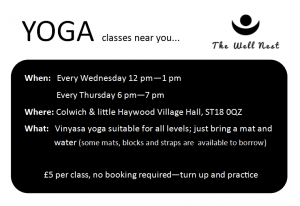
Spacious Back Bends with Ann-Marie Mainprize – Review
My visit to the Om Yoga Show this year provided the chance to try something completely different from the selection of classes available. I usually go for something demanding and full-on so I get a good workout as well as learn from new teachers. As I had managed to book onto two classes this year, I mixed it up with a class on backbends with Ann-Marie Mainprize of Amiyoga in Hull.
The class promised to ‘deepen backbends the Forrest yoga way’ through ‘connecting the core and releasing deep rooted postural tension’ – sounded excellent to me! As I’ve never tried Forrest yoga, that was an added bonus.
I know many people struggle with spinal flexibility and I often advocate core strength as a way of back-bending with confidence, so this sounded like a great way to improve my own knowledge and experience how other teachers focus a class on back-bending safely.
The class focused straight away on opening the front of the body as a way to improve flexibility and stability through the back of the body. We did a lot of strong abdominal work which although simple, was incredibly hard work on the deep core muscles. Lying flat on the back with legs straight in the air we were instructed to press the lower back into the mat and curl up the tail bone – the simple action of lifting in this way (with breath work and holds) was a huge workout for the core.
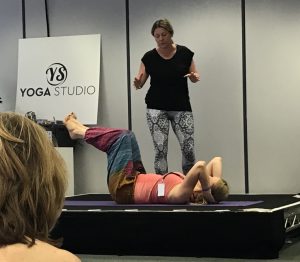
We went on to work dynamically through sun salutation B, some low lunges and lizard pose with a arrow foot stretch (pressing the top of the back foot down into the mat to apply a deeper stretch to the hip flexor) which was bliss but also agony for my tight hip flexors. We visited the ‘engaged glutes or relaxed glutes’ argument when in wheel and bridge – Ann-Marie was on the side of engaged glutes as it provides greater support for the lower back; something I agree with.
An interesting counterpose to all the back bending was to twist out rather than forward bend to reset the spine. Again there is a lot of discussion around this at the moment, but it was the first class I have been to where twist rather than forward bend was taught. I always found that bending the opposite way was counter-productive when deepening spinal flexion…but that forward fold always seems to really loosen the spine as well. The class with Ann-Marie was a real anatomy class – her knowledge was obvious but she made it accessible to all.
The one issue (which I found last year as well) was the poor quality mats provided for the workshops – almost on the edge of dangerous when in wheel as they were so slippery – this is a show issue not a workshop issue however.
I loved the class with Ann-Marie as it was obvious she was used to teaching all levels of students. Her approach was very instructive but helpful (she had three assistants providing hands-on assists throughout). This was a real workshop rather than a yoga class as poses were broken down with anatomy at the forefront. I would definitely recommend this class for yoga teachers.
The next day (and the day after) the muscles either side of my spine were definitely feeling the work that had been done in this class. The simple but effective core strengthening exercises feature regularly in my practice as well now. Definitely worth taking a class with Ann-Marie.
Om Yoga Show Manchester 2018 – Review
I’m a big fan of the Om Yoga Show; this must be the eighth or ninth time I’ve been to the show over the years and the third time visiting the ‘Northern version’ up in Manchester. I enjoyed the show last year and generally find it a much more enjoyable experience than the London version of the show.
Travelling to Manchester is pretty easy from the Midlands by train or car and helpfully, the organisers had kept the venue the same as last year; Event City, right next door to the Trafford Centre (and with free parking woohoo!). I went up on the first day of the show (Friday) and arrived at about 11.30 am and was surprised to see a giant queue to get in, stretching all the way into the car park. I got chatting to a fellow yogi in the queue and she agreed that it hadn’t seemed this busy last year. luckily the queue moved quickly and we got inside to find the hold-up had been due to staff trying to fill and hand out goody bags right in the doorway. Just as we got to the front of the queue we were told the goody bag area was causing a hold-up (no kidding) and so we would have to come back later to collect ours. No problem, as I didn’t fancy carrying the massive paper bag round the show with me.
As it turned out, I could have done with the massive bag to carry all my purchases – I still forget that nobody gives you a carrier bag anymore! The freebies inside this year included samples from BIO-Extracts of face cream, anti-oxidant boost and anti-wrinkle boost and some NOUGHTY leave in conditioner. I gently turned down the free sample of cider vinegar (even though I heard a lively discussion about how it can be effective if applied to acne – not sure which is worse; spots or smelling like vinegar??)
What was on
There was a good variety of stands on offer again this year – about 100 to choose from. This included food and drink, equipment, books, music, clothing, retreats and teacher training, meditation aids, and my personal favourites singing bowls and gongs. I played lots if different singing bowls and had a good chat to the owner of the Moon Karma stand (who was also an ashtangi running yoga retreats in Nepal…that went straight on the to do list). There were also three open classes and two workshop areas and a meditation area. The ticket price of £7.50 for one day entry was a bargain as usual as this allowed access to the show and free entry to all the classes in the open and meditation areas. It also included free entry to Vegan Life Live and the Mind Body Soul Experience.

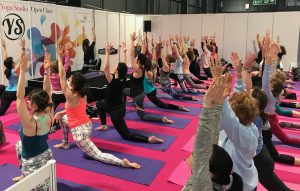
What to do
I started with my usual quick circuit of the stands to find out what was where and who/what I’d like to revisit. Despite the big queues to get in, the show was not overcrowded and it was always easy to see and speak to any of the exhibitors. It was great to see the open classes so well attended. It’s never necessary to queue for more than 5 minutes at the Manchester show to take part in a free class, whereas I have been known to spend 30 minutes waiting at the London show only to be told the class is full.
The open classes this year included traditional Hatha yoga, inversions, singing bowl meditation, chair yoga, crystals, alignment, how to flow, yoga for MS, Kundalini, Kriya yoga, and vinyasa flow to name but a few. There was also a children’s yoga open area. I didn’t have chance to try and open class this year as I had two workshop bookings, but I did stop to watch a few. The Kundalini open class run by KYTA was fascinating; they played some fantastic music which really did help to connect mind and body (and I was only observing!). That one is going on my list for next year. The classes were full, but I didn’t see anyone get turned away so even if you don’t have a workshop booking, it’s worth coming to the show to try a new style of yoga for free. The DRU Yoga area had loads of free taster sessions going on all day as well – I’ve participated in these before and they are well worth the experience. I always think DRU would be the perfect yoga class to get you going in the morning.
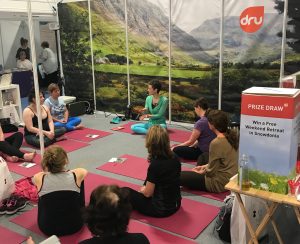
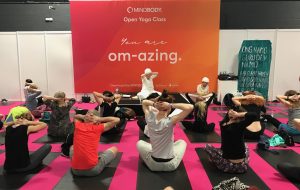
The workshop areas were easy to find and the cost of these longer, intensive classes ranged from £5 – £10 for between 60 and 90 minutes – another great value way to try new things with national or international teachers.
Vegan Life and Mind Body Soul Experience
I briefly popped into Vegan Life Live because I know the food on offer is far superior to any of my own creations. As usual there was a great variety of food on offer as well as clothing, books and workshops to look at. I didn’t spend long in the show, but it was busy inside. I visited Home Kitchen Vegan again for the finest Asian food I have ever tasted!
The MBS Experience looked noticeably depleted this year. There were some familiar stands and faces from previous years, but none of the more interesting meditation, sound experiences and alternative therapies that have previously featured. I’d only recommend a visit to this show if there is a particular Tarot card reader or MBS practitioner that you want to see; otherwise it doesn’t have much to entertain you past the 30 minute mark.
Would I recommend the Om Yoga Show?
Definitely! This show remains a real bargain to visit and with all the free experience areas you can make a full day of it without spending more. If you do want a longer workshop, you can see world leading teachers for a bargain price. There is enough to entertain you for a morning or afternoon if you’re not doing an additional workshop or easily a full day with the extras. I noticed that the variety of clothing stands wasn’t quite as diverse this year but I loved the new additions of gongs and stands with a charitable or education focus.
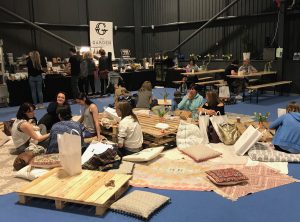
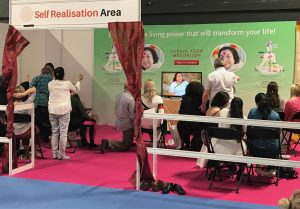
The show desperately needs more areas for meditation and mindfulness and this should be a focus for next year as it was noticeably absent. The noisy atmosphere of the show means that people are often drawn to the quiet areas; and whilst there were places to sit, there were few places to enjoy a peaceful experience and try something new.
The Om Yoga Show is back next in London on 19th – 21st October 2018.
The Importance of Wellness at Work
Workplace wellness programmes are well worth the time and effort invested in them. The success record of companies offering these programmes indicates that an employee who is happy and healthy is more productive and motivated, stays away from work due to illness less often and remains employed with the company for a longer time.
Are you aware of a wellness programme in your workplace? Would you like one?
I’ve worked in a lot of industries and for a lot of companies of different sizes over the years. I haven’t yet encountered any consistency in relation to employee wellness, but I do think that each and every one of the employers I have worked for would undoubtedly say that their employees are the greatest resource and asset to the company.
Most large companies have an IT support team, an estates and facilities team, a grounds maintenance team…all looking after the assets of the business. How well does the Human Resources team look after the employees?
You have probably been offered training, access to conferences and events, possibly social events organised by the company. You may or may not have access to a good annual leave entitlement and additional benefits in the form of discounts or vouchers for products and services…have you ever been offered access to mental health or wellbeing services (importantly, without fear of stigma)?
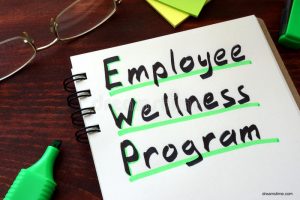
A workplace wellness programme demonstrates to employees that the employer recognises and cares about their health. Let’s face it, we’ve all had time off due to poor health. If there was a programme available to address mental and physical wellbeing, the morale and engagement of staff would increase and time off decreases – it’s win/win.
A great number of illnesses can be reduced or avoided through lifestyle change. As we spend the majority of our time at work, it makes sense that some of the lifestyle changes should be accessible or incorporated into our working life. Access to a quiet and contemplation room, guided meditations, mindfulness courses, relaxation classes, yoga, pilates or Tai Chi classes could make a massive difference to staff wellbeing and productivity. The feeling that you are valued at work makes a real difference – and this isn’t just reflected in the pay slip.
Here are some of the benefits that can come from a workplace wellness programme:
- Improved focus and concentration
- Better physical strength and stamina (less of the aches and pains from sedentary working)
- Increased job satisfaction and a feeling of being valued
- Better relationships with colleagues
- Lower staff turnover (reducing training costs) and greater job satisfaction
- Reduced absenteeism
- Positive corporate image
A wellness programme can be designed to fit around your resources, time, business and employee needs. The benefits to employees and the business can be enormous. Here at The Well Nest we can work with you to offer yoga and mindfulness packages to benefit the physical and mental health of your employees and return those benefits to the business.
To find out more contact [email protected] or visit the Workplace Packages page.
Mental Health Awareness with 1st Armitage Scout Group
The importance of raising awareness and recognition of mental health conditions is gaining a lot of support in the press and is high on the agenda for employers and health groups. It was great to hear that the Scout Troop Leaders at Armitage were exploring the theme of mental health with the Scouts over a number of weeks. Different activities were tried by the Scouts to encourage stress reduction and ways of helping to improve mental health.
I was invited along to teach a yoga class for the Scouts including some relaxation and meditation. There were around 30 Scouts ranging from 10 – 16 years old and all very eager to get started with yoga! I gave an introduction telling the Scouts how yoga can help improve mental health through concentration in the present moment, release of endorphins and breath control.
We tried some breathing exercises to lower the heart rate and increase oxygen circulation before going into a class themed with animal postures to keep the Scouts engaged throughout. After some downward dogs, dolphins, camels, tigers and flamingos thrown into the mix, we settled down to a final relaxation of counted breath. Surprisingly, quiet came to the room as everyone concentrated on their relaxation.
The session was a big success with the Scouts and the Troop Leaders who joined in, and gave a valuable taste of an alternative method for improving mental health.
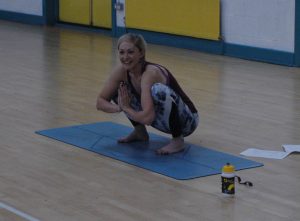

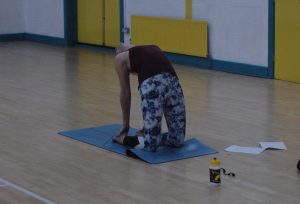
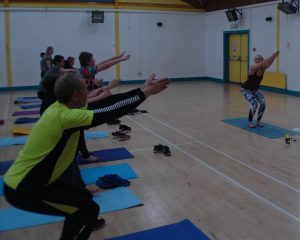
New Year Yoga
What are you doing for yourself this year?
Come and join us for New Year Yoga! Starting on Wednesday 3rd January 2018 at 12 pm
